This was actually the hardest post to write as I had no idea on how to start. I have to say that for me, nothing beats Portuguese food: it has a huge variety, it’s simple but tasty and cheap. It changes from North to South and it’s all about staying true to natural flavors: never overpowering, just enhancing them.
Habits:
– Breakfasts are really simple: coffee, toasted bread with butter, cereal… nothing very creative.
– We eat either fish or meat at almost every meal. I am sorry Vegans/Vegetarians…
– There’s no such thing as long coffees. Expresso is the way to go (50/60 cents).
– A traditional meal consists of soup, main and fruit or dessert.
– Every dish starts with olive oil, garlic and onion (mostly).
“BREAD IS LIFE”
Bread (pão) is a crucial element of Portuguese culture. During the times of dictatorship, bread was what kept people alive, as it was extremely cheap. Therefore, it started being used as part of main dishes, for example: Açorda.
We can divide the bread in three main categories, (I guess):
Wheat bread (most common, eaten everyday) | Corn bread (extremely fulfilling and tasty) | Bread complemented with other ingredients: Pão de Deus, com Chouriço or Bola (one of the best snacks ever)
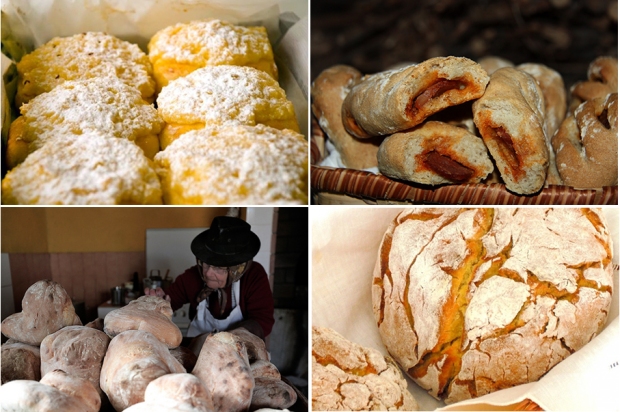
“WARMING UP”
In cafes you can find the classic Portuguese snacks, things like pastéis de massa tenra (meat stuffed pasties), croquetes (deep-fried meat patties), pastéis de bacalhau (salt-cod fishcakes), bifanas (a grilled or fried pork sandwich), and pregos (steak sandwich).
Petiscos is the Portuguese word for tapas, small porsions of food. It can be something as simple as olives, tremoços (pickled lupine seeds), stewed snails and octopus salad.
The “sausages”
I think there’s not word in English for enchidos. These are “sausages”, are made of meat (usually pork) which is mixed with herbs and spices. They have a really strong taste but are amazing as an entrée. The most famous are chouriço, alheira and farinheira.
The soups
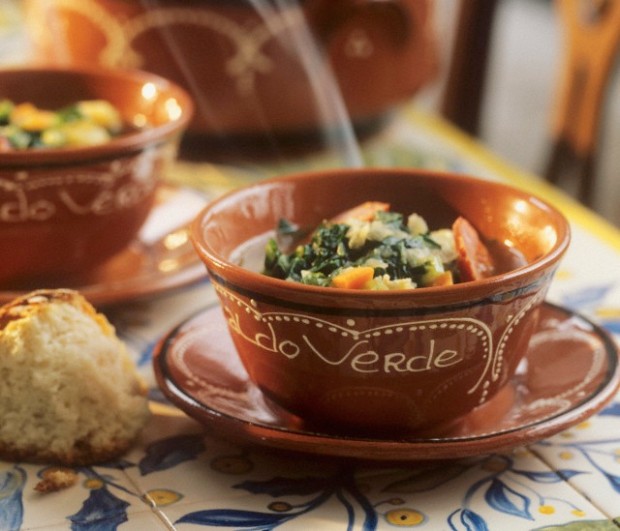
In most Portuguese houses, soup is how you start a meal. Usually these are vegetable soups, really simple and fast to make. The most traditional ones are: caldo verde (potato and cabage), sopa da pedra “rock soup” (a soup with everything inside: potato, beans, meat, chouriço…) and fish soup. In most restaurants you can usually find “vegetable soup” and it’s between 1 and 2 euros.
“BRACE YOURSELVES, FOOD IS COMING”
The soul: Fish, fish and more fish. And some seafood.
Seems like Portugal ranks 4th in fish consumption per capita in the World and the 1st in Europe. This is an important topic.
THE COD (or should I say GOD?)
Our national dish is dried and salted cod fish, which is kind of ironic because cod comes from Norway. We have infinite ways of cooking it, some healthier than others. Most Portuguese tables will have some kind of cod dish on Christmas and it’s something we eat very often as well. These are 4 of the most popular bacalhaus:

Grilled Fish
In Algarve, having fish for dinner that was fished two or three hours ago is something very normal. This is the land of fresh fish, which is grilled on coal just with some salt on top. It’s served with boiled potatoes and you can add a bit of olive oil to it. If you add something else you are ruining it and people will give you a killer look if you ask for any sauce like ketchup or mayo. That’s just a crime.
Octopus, Squid and Cuttle Fish

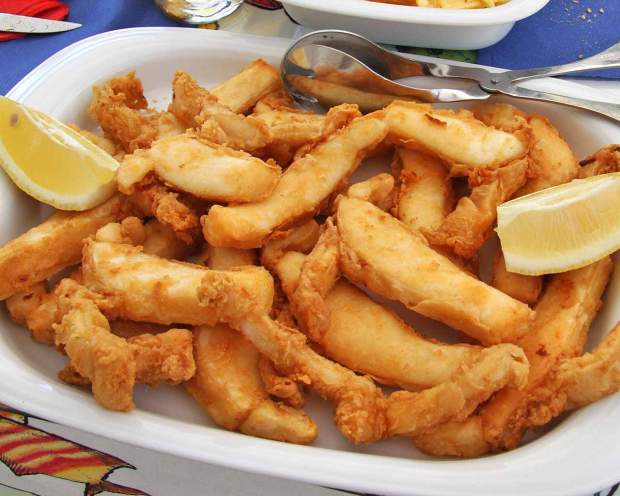
Best Squid Dish: Luas Recheadas (Stuffed Squid) – Algarve
Sea Food
Sea food is better and cheaper in Portugal than in other European countries. Clams, shrimps, crabs, lobster… You can find them pretty much in any restaurant close to the sea, especially as an appetizer. The most famous seafood petisco is “ameijoas à Bulhão Pato” (Bulhão Pato clams). Another beautiful and full of flavor seafood dish (a main) is Seafood Cataplana.

Where to Eat Seafood: Lisbon, Ramiro Restaurant
Where to Eat Cataplana: Algarve Region
The heart: Meat & Comfort food
Meat is part of our menu on a daily basis. The most famous and commonly eaten meat dish in Lisbon is a Bitoque: a fried or grilled steak with a fried egg on top accompanied by a very unhealthy sauce and fries! Porto is home to Francesinha a very fulfilling meat sandwich with cheese and topped with a spicy sauce.
Among other most famous meat dishes are:

Cozido à Portuguesa – a mix of beef, pork and chicken meat, boiled with cabbages and potatoes and all kinds of enchidos.
Carne de Porco à Portuguesa (Pork Portuguese Style) – made of little pieces of pork seasoned with spices and fried with clams.
Arroz de Pato – is one of the most appreciated dishes in the country. The duck is boiled and the rice cooked in the duck’s water. In the end everything is layer out in a tray and put to the oven with slices of chouriço on top.
Because no part of meat was to be wasted, it’s possible you also find something like “cow’s hand” or tongue and “pork’s feet” or tripe. We also use chicken’s blood to cook some dishes like Cabidela. Sounds disgusting, tastes amazing.
And now the answer to: “How can you eat so much???” “After some sips of golden liquid there’s always space for more!”
WINE: Our National Treasure
Portuguese wine, especially Porto, is known as one of the best wines in the world. Throughout the whole country, wine is produced in big quantities both for domestic consumption and export. A bottle of wine in a supermarket starts from 1 euro, these ones usually being used to season food and for cooking. Starting from 3 Euros you can start having nice bottles of wine.
I’m not a wine expert so I will leave you these links if you are interested.
Portugal is shaking up the wine World
5 Dry Portuguese Wines That Will Knock Your Socks Off

Ladies and gentleman if you weren’t convinced already that Portuguese Food is one of the most amazing things in the World here it comes:
“PIECES OF HEAVEN”
Portuguese Pastries and Sweets
I truly think this is the best part of our cuisine and that it’s way underrated. Besides the French I don’t think anyone can compete with our deserts. There are hundreds of delicious, hearty desserts with 500 years old recipes which are to die for. They may not look like art works but they definitely taste amazing.
A great part of our desserts’ recipes comes from monasteries and convents as they were created and made by nuns. Most of them have a looooot of egg yolks and the other common ingredients are: sugar (of course), almond, cinnamon and milk.
Pastel de Nata: The Worldwide Superstar
It’s our most iconic sweet and it’s eaten on a weekly basis in Portugal. I was extremely surprised when I learned they are sold in Malaysia and Singapore in KFC (not the real thing if course! :p) This is an egg custard tart in puff pastry that is best served warm, fresh out of the oven and sprinkled with cinnamon. Simply to die for!
Where to Eat: Lisbon, Pastéis de Belém
And now let’s proceed to a showcase (I am almost crying just by looking at them!!) of the “must try”:
North of Portugal: Arroz Doce & Leite Creme (sweet rice and kind of crème brûlèe)
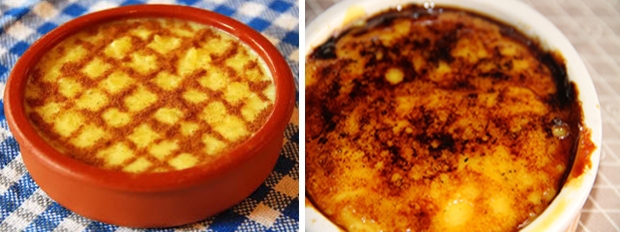
Creamy dessert made with milk, eggs, and burnt sugar
Center of Portugal: Pão de Ló, Ovos Moles and Pastéis de Tentugal

These are bombs when it comes to your health but they are unbelievably good! The simple combination of eggs and sugar can make miracles.
Where to eat them without having to travel the whole country: A Pousadinha, Lisboa
Sintra: Travesseiro and Queijadas of Sintra
Sintra is not just a beautiful mountain full of castles, palaces and secret gardens. It is also home to these tasty pastries. My favorite ones are the tiny brown ones: Queijadas (made of cheese).
Setúbal and Alentejo: Tortas de Azeitão, Sericaia, Pastéis de Feijão and Biscuits

Algarve: Dom Rodrigo, Cream Pie, Bola de Berlim, Tortas

And this is the end. I know it’s huge but I have always wanted to make a post that would show the best of Portuguese Food. There are obviously dishes that are not represented here but this is a mix between my favorites and the most well-known. One day I’ll write about the food in the Islands 🙂
Hope you enjoyed it and Bom Apetite!
* To learn more about the Portuguese influence in the culinary world click here and here!
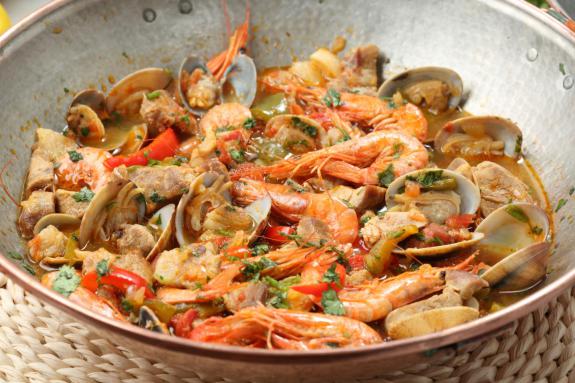
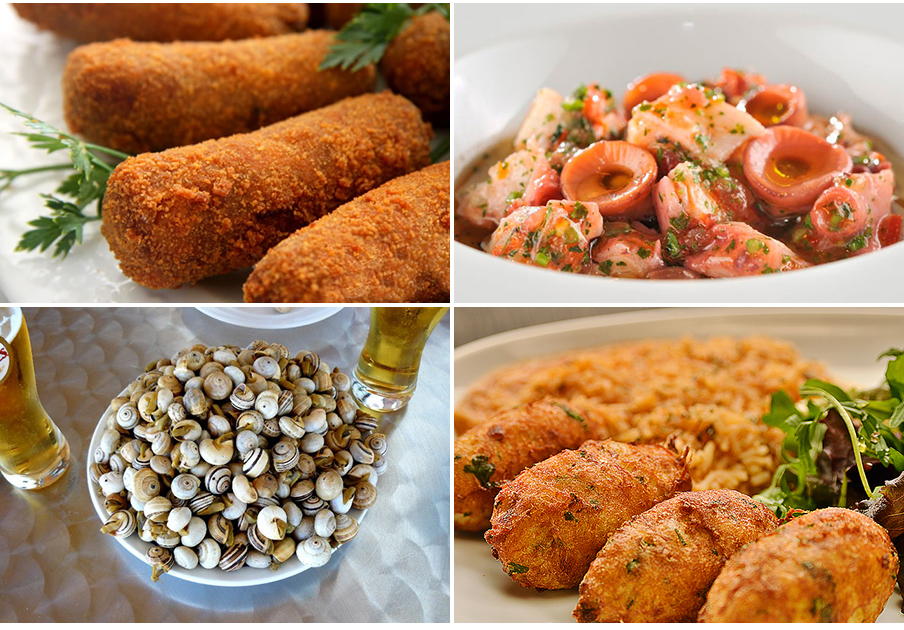


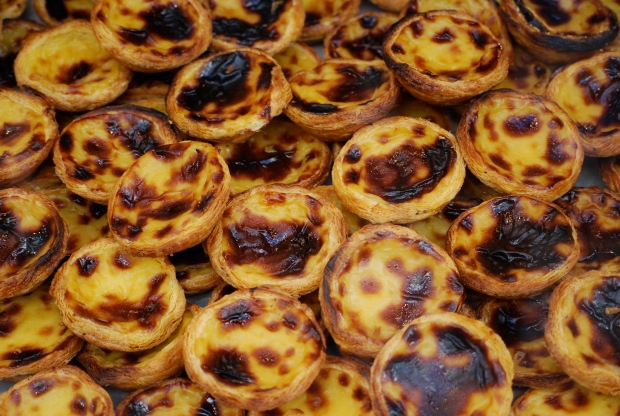

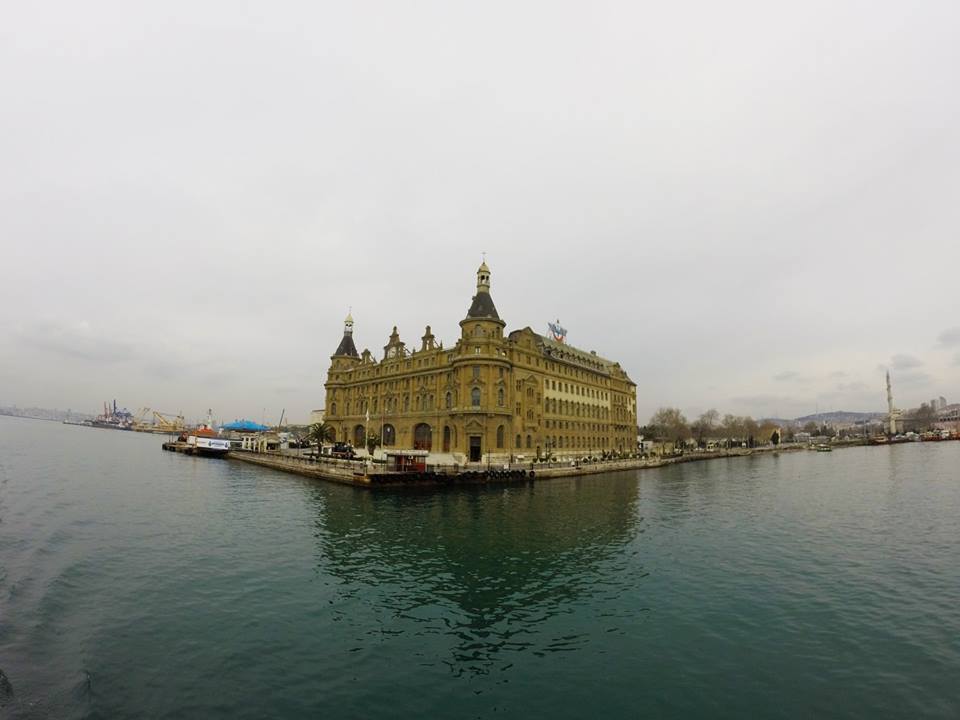
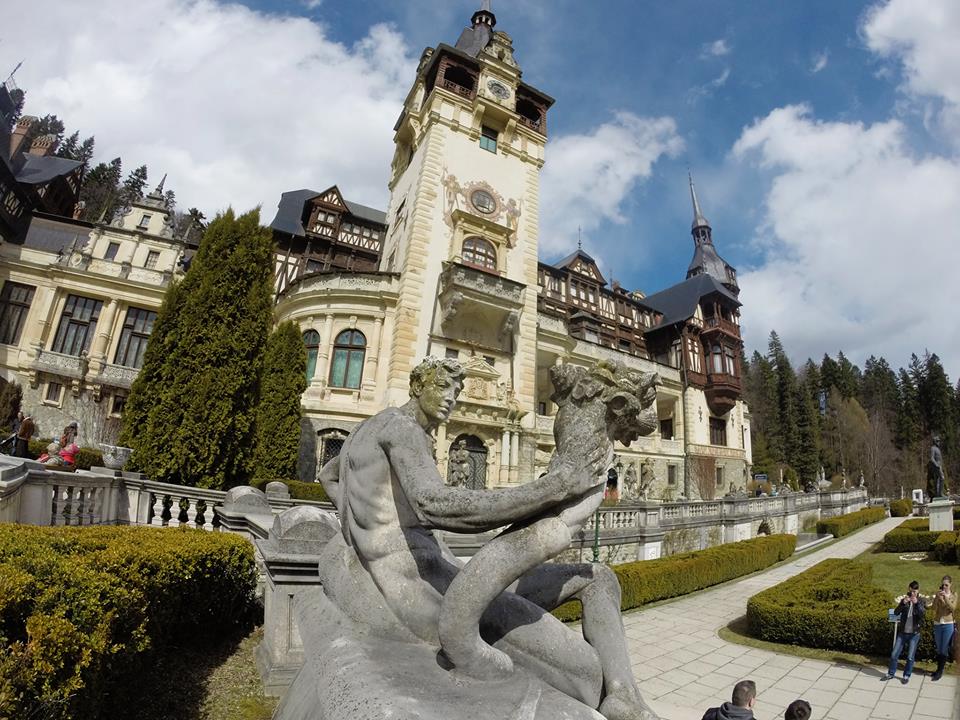
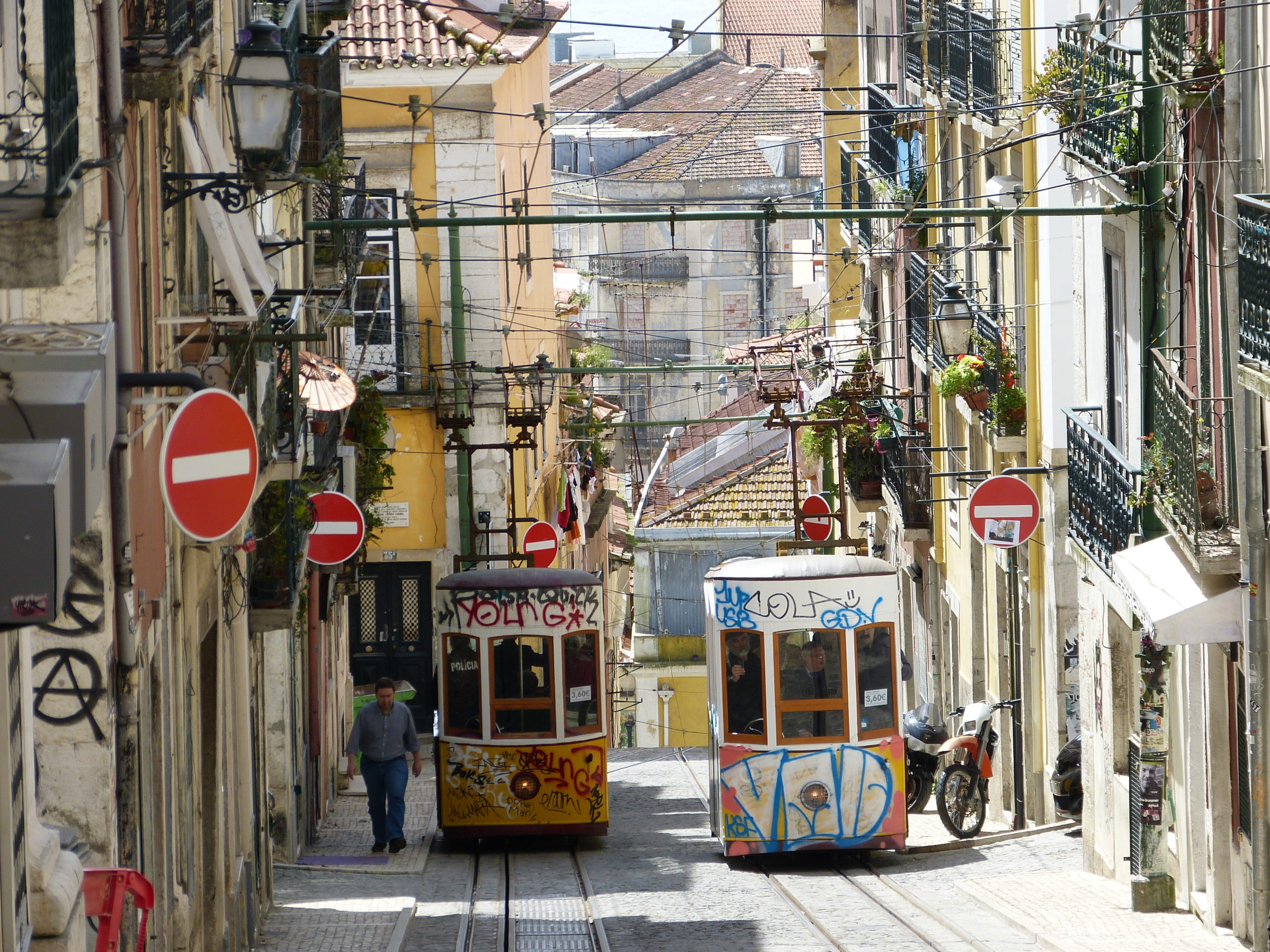
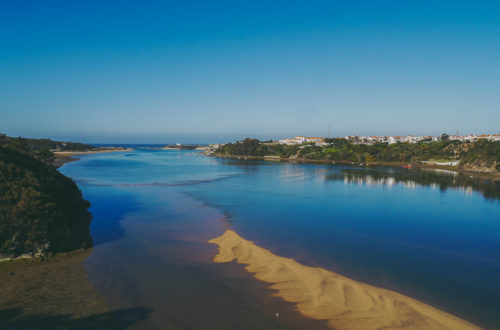
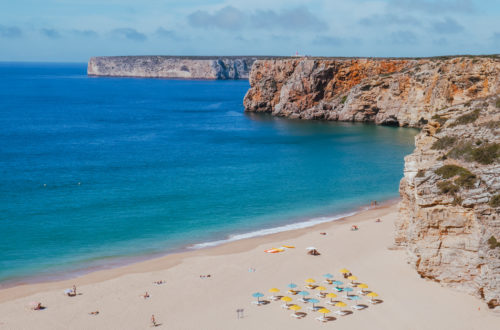
2 Comments
saltofportugal
Everything looks delicious!
Inês
And it tastes delicious 😀